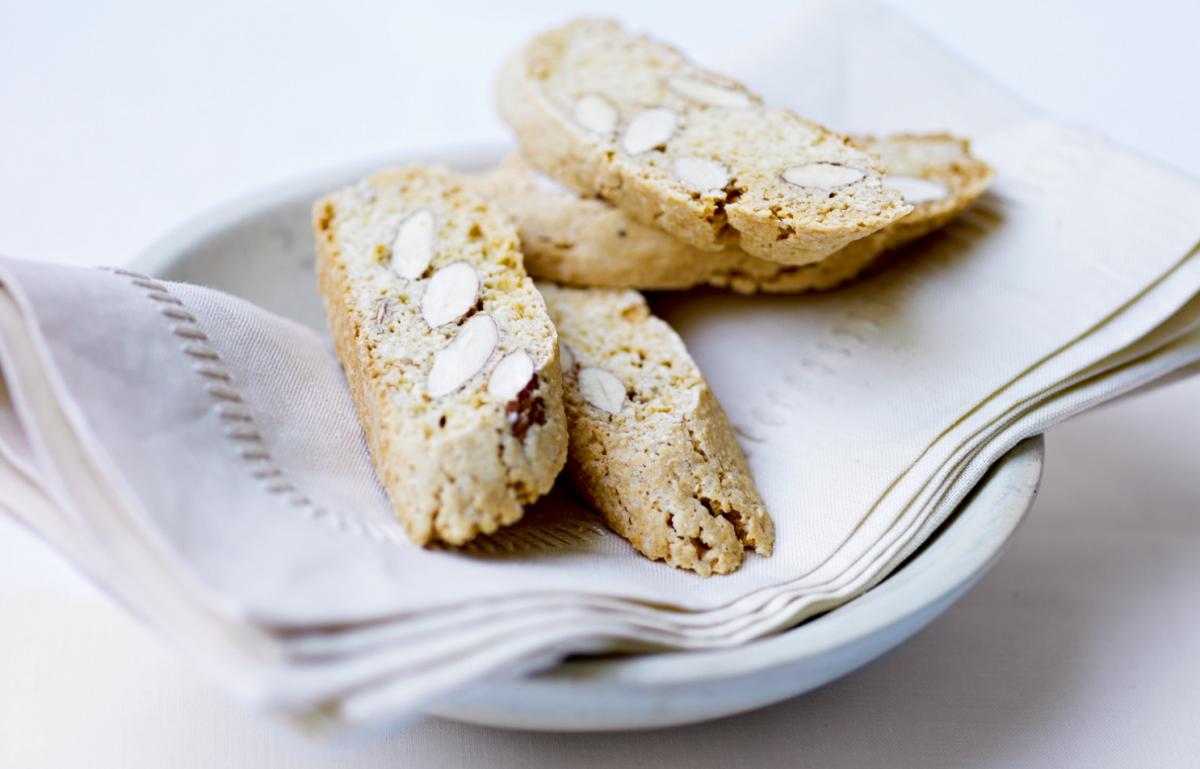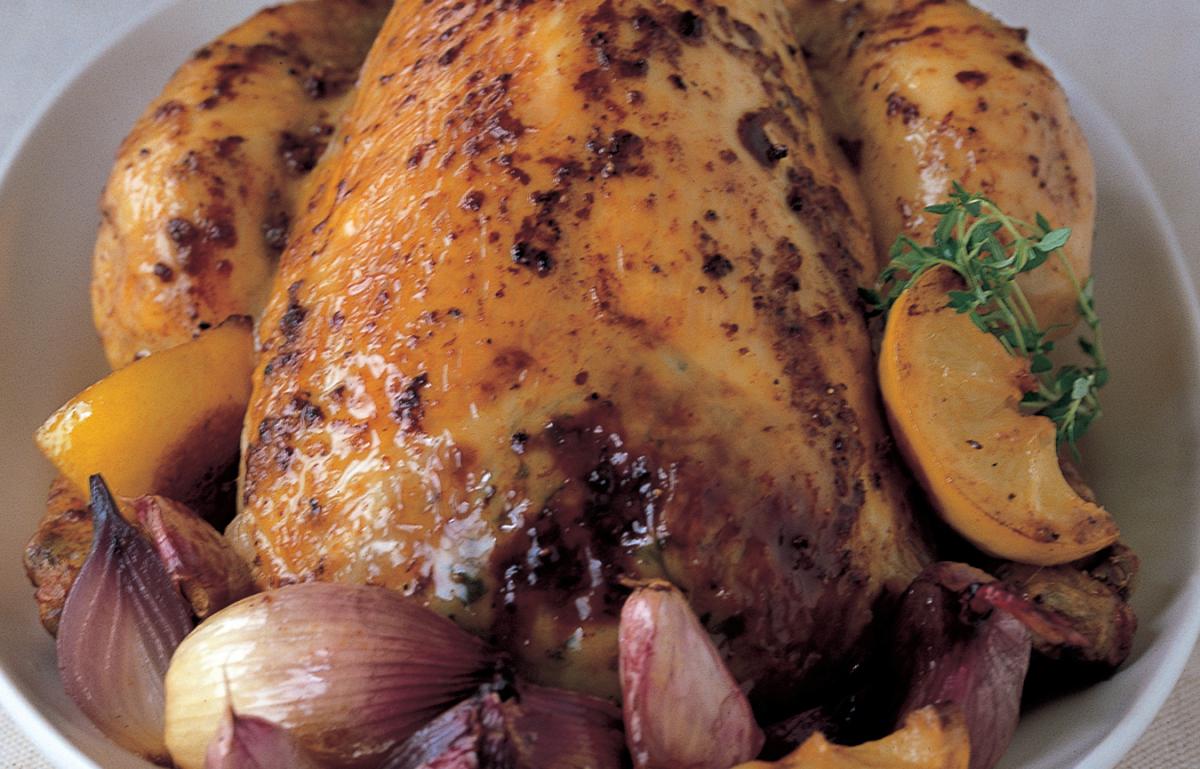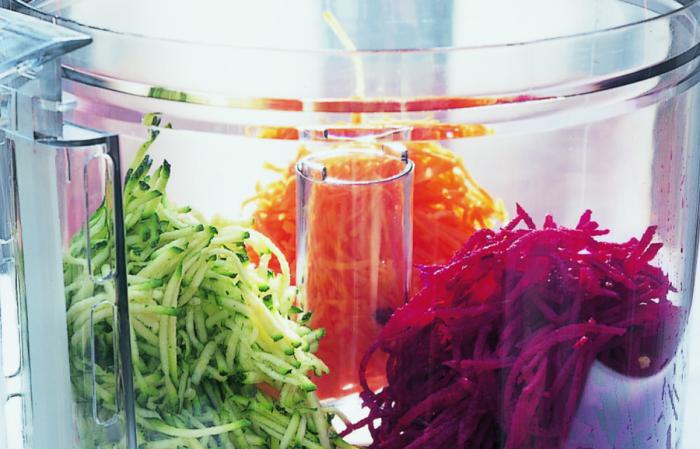


A blender really will make very light work of blending soups – speedily, easily and to a good, smooth, uniform texture – and it can happily cope with as much as 1¾ pints (1 litre) of liquid at a time. This, for me, is its prime function. Home-made soups are cheap and easy, nourishing and comforting, and will always be part of my home-cooking repertoire.
![[object Object]](https://www.deliaonline.com/sites/default/files/quick_media/soup-tuscan-white-bean-soup-with-frizzled-shallots-and-pancetta.jpg)
Processors are not always good for blending small quantities, so if you want a small amount of mayonnaise, Hollandaise, breadcrumbs, pesto or anything else that needs some quick, brief blending, you will find a blender does a better job.
It won't grate or chop; it pulverises but doesn't actually chop. So herbs, for instance, just get mashed to a pulp, which is okay for pesto, but not for other things. Incidentally, I think a liquidiser is a more accurate title here than blender because it pulverises ingredients almost to a liquid.
Briefly, with a hand-held blender you have to do a little more work. In the goblet of a full-blown blender the ingredients are pulverised at the press of a button in seconds; with the hand-held version you have to manipulate it into the corners of bowls and pans to make sure the blades are reaching all the parts they need to. What you use is a matter of personal choice. Some may find the bother of washing a goblet a chore (though they are dishwasher-proof nowadays) and I have friends who say they prefer the hand-held version.
If you really don't enjoy cooking, particularly making and eating home-made soups, I would say probably not. But I feel a serious cook will always appreciate having both a blender and a processor because the two together provide a wonderful service in so many different areas of day-to-day cooking.
This is probably the most expensive kitchen item you will need to invest in. Although a food processor is not an absolutely essential piece of equipment, because you can certainly chop, grate, slice, knead and mix everything by hand, it does do all these things very quickly and efficiently and saves you time and energy. After years of using one myself, I am convinced every serious cook should have a processor – it's a great piece of equipment.
![[object Object]](https://www.deliaonline.com/sites/default/files/quick_media/htc-equipment-food-processor.jpg)
There are dozens of different designs and sizes, but I would say that if you invest in the largest size, with the most powerful motor, you will have the best of everything. Remember, quality never comes cheap, and beware of what looks like a bargain but may have a short life and not do the job really well. A warning: the blade in the processor will wear out in time, so if your processor begins to show signs of not performing as it should, it probably needs a sharp new blade. This can be ordered from kitchen shops or direct from the manufacturer.
When you buy a processor and begin to use it, you will soon get the feel of how it performs. One of the most common misuses of a processor is to overdo it. This was much more of a problem before the pulse button was invented, when something chopped could become something puréed, over-processed nuts could become an oily, claggy mess and puréed meat make hamburgers or rissoles very bouncy! With the pulse button you can see what is happening after each burst, which is important, but care must still be taken not to over-process.
First on the list is chopping, particularly large quantities. It can chop 1lb (450 g) of onions in seconds and will therefore save you masses of time. It can also chop other vegetables, fruits and nuts. I love my processor best when I feed it cubes of bread, which it instantly turns into breadcrumbs (some of you will be far too young to remember the tedious job of grating bread into breadcrumbs on the side of a grater).
Also, if you want to make a stuffing, the onions, breadcrumbs and herbs can all be whizzed together – a brilliant time-saver. It can also evenly chop meat much more efficiently than the old-fashioned mincers that squeezed the meat through the blades.
Yes, it's good at that too! With a special attachment you can deal with cucumbers, apples, cabbages, potatoes and whatever needs to be sliced evenly and precisely. You can even choose thick or thin slices.
![[object Object]](https://www.deliaonline.com/sites/default/files/quick_media/htc-generic-tortilla-slicing-potatoes.jpg)
There are a million and one things you can mix in a food processor: whole-egg mayonnaise, for example, can be mixed in moments. It can then be made into chunky tartare sauce, with capers, cornichons (baby gherkins) and parsley chopped in at the end – taste it and you'll never want the shop-bought version again!
If you're nervous about making pastry, or if the fat from the fridge is too hard to rub in by hand, the processor will make extremely good pastry, provided, at the end, you add the water a little at a time to get a good consistency. Sometimes, when you are serving vegetables, it's nice to ring the changes and whip them into a purée. With a little crème fraîche and some butter, a processor will make a lovely smooth, velvety parsnip purée. I also like to add steamed swede and carrots to the bowl of the processor while they are still hot, and whizz them, not to a purée, but to the coarsely chopped stage.
Grating large quantities – not just of breadcrumbs – can be hard work by hand. A good processor will have a grating disc with various different settings so you can grate cheese and vegetables. It makes light work of something really hard, such as fresh coconut, and if you need a large amount of freshly grated Parmesan, it is all speedily and easily done.
I have to confess that, although I like the idea of hand-kneading bread dough, it does rather sap your strength. So if you want the easiest home-baked bread in the world, it's absolute bliss to let the processor, fitted with a special dough attachment, do all the hard work for you while you get on with something else. But there's a warning here: in some processors the dough attachment does not operate very effectively and the processor can end up doing a shuddering dance all along the work surface. The most solid ones, therefore, are the best.
![[object Object]](https://www.deliaonline.com/sites/default/files/quick_media/htc-generic-dough-in-processor.jpg)
Number one on this list is mashed potatoes. It seems logical that a processor should do this, I know, but absolutely not. Something happens to them in a processor that makes them gloopy and glue-like – not nice at all.
Although you can make cakes (such as sponge cakes) with a processor, I feel the space inside the bowl is too confined and doesn't let the air in. So I personally wouldn't choose to make a cake in mine.
The same applies to whisking: there is a whisk attachment that allows you to whisk egg whites but, again, I feel I'm not going to get as much air in. However, this is a personal preference – you need to discover for yourself.
As for herbs, I feel a good sharp knife makes a better job of chopping herbs on their own (herbs added to other mixtures are fine). The processor can overdo the job and make them rather wet and soggy.
Soups can be puréed in a processor, and it's good if you want a coarser texture, but it can only be done in very small quantities or it spills over and becomes very messy.
Have you got room to spare? Having it plugged in and ready to go is vital – if it's stashed away in a store cupboard you won't want to be bothered.
As I said earlier, it's worth investing in the best. You could begin with a smaller, cheaper model, but I think a good-sized, powerfully motored, top-of-the-range version will serve you best in the long run.
Watch where the blades are: when you buy a processor the blades need to be as low down as possible. Check the level of the blades as they sit in the bowl; the higher they are, the less effective the machine, because a small quantity of ingredients will just sit in the bottom with the blades merrily whizzing above and the two never meeting!
Follow us Like us on Facebook Follow us on twitter Follow us on instagram Follow us on pinterest Follow us on youtube
© 2001-2024 All Rights Reserved Delia Online